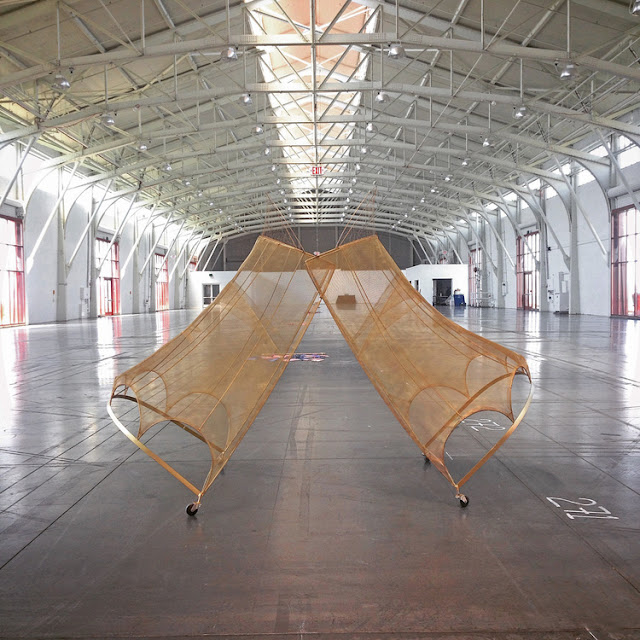More Expansive Thoughts On Narrowing Your Focus
In my last couple of blog posts, I've begun to discuss the concept of intentionally imposing limitations on one's creative work. The contention is that sometimes, narrowing your focus counterintuitively opens up and deepens lines of inquiry and consequence rather than limits or shackles you.
I gave a few personal examples. Today I'll further explain the impetus behind my limiting myself, in the subtractive portion of the (wood) sculpting process, to the use of a tool not designed for carving in the round: forstner bits.
We begin a couple of years before I made a distinct change in direction from custom, client-driven marketing related work to art.
During the time I built custom props, etc., for a living, finding creative solutions was often the m.o.
Whenever I didn't have a clearly defined process to follow, I first began by scrolling through my mental data bank of available tools and machines, previously employed solutions, and/or others' solutions (often, these days, via the invaluable resource of YouTube). Typically, a workable solution can be found using a combination of all of the above.
This particular time, my brother Tony and I were working on a large prop for Frito Lay consisting of a tall foam figure that was to hold up a large cauldron of (faux) fire. While most of the figure, with its galvanized metal pipe-armature, was carved from laminated blocks of foam, the hands needed to be sturdier, so I made a pair from laminated blocks of 3/4" poplar, cut them out on the band saw, and then sat back and looked at them.
All sides would need shaping, but the first problem was how to create a concave curve in the palms to securely mate them with the convex underside of the large cauldron the figure was to hold above its head.
After mulling and discarding a few ideas, I thought about forstner bits.
The idea I ran with was to drill deepest at the centers of the mitt-shaped poplar blocks' palm side. Then, in a radial, concentric-circle pattern, I'd drill a bit shallower on the first circle surrounding the center, and continue with multiple, radiating, concentric stepped tiers until the surfaces of both palms from fingertip to heel and pinky to thumb had the concave curve desired.
I then turned the hands over. They needed to be rounded over here, on the knuckle side, as well. Again, I looked at the available options. This time, a combination of the shop's wood gouges, "V" tools, and the thin stationary belt sander seemed the most appropriate way to go.
I flipped one of the hands over and looked at the palm again. The circular patterns the forstner bits' outer wings made were interesting. The multiple ))))) marks left in the wood had a kind of rhythmic abstraction I found intriguing.
Then I looked at the drill/driver in front of me, forstner bit still locked in its chuck. Why not continue to pare down the remaining edges with the forstner bit? It might even save time over using hand tools.
So I clamped the hands back down and, after I'd finished with the forstner bit, I did some backfilling with a kind of epoxy primer, and then sanded the hands with the belt sander.
After taking the first pair to the figure (which my brother was working on in my home studio) and realizing the hands needed to be larger, I took the first pair home and showed them to my wife.
Significantly, my wife recalls my telling her that if I ever went back to making art one day, I'd like to experiment with making sculpture using forstner bits - a fact forgotten by me in the two years or so between the Frito Lay project and my first sculpture.
To sum things up, the use of forstner bits for carving in the round, something I don't recommend you try at home, kids, and have the scars to prove it, wasn't randomly generated. It wasn't manufactured. Wasn't the result of wringing my hands and exclaiming, like a disconsolate Auda abu Tayi in my favorite film Lawrence of Arabia, "I must find something honorable".
To use another analogy, it wasn't homesteading - wasn't searching for a seemingly ever-shrinking plot of available unclaimed artistic ground to pound my stake into. To me, that approach seems to be putting the covered wagon ahead of the horse.
No, it was just one of the many interesting off-shoot alleyways that one happens upon in the organic process of problem solving. One that I noted as interesting enough to come back and visit - heck, perhaps even live in - one day.







Comments
Post a Comment